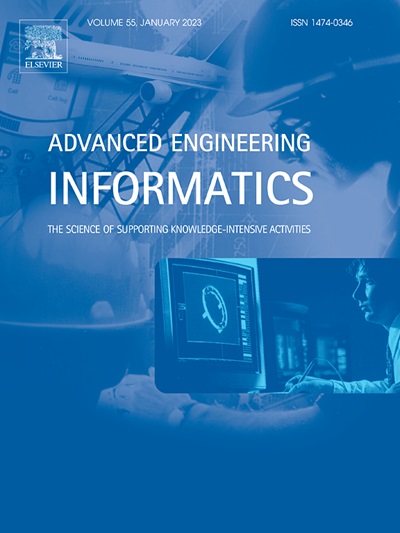Adaptive collision avoidance strategy for USVs in perception-limited environments using dynamic priority guidance
IF 8
1区 工程技术
Q1 COMPUTER SCIENCE, ARTIFICIAL INTELLIGENCE
引用次数: 0
Abstract
This paper proposes a dynamic adaptive priority guidance (DAPG) strategy for unmanned surface vehicles (USVs) to improve collision avoidance in dynamic maritime environments, particularly in unpredictable moving obstacles. Traditional local navigation methods often depend on fixed parameters within their cost functions, limiting adaptability. In contrast, the DAPG strategy integrates the strengths of multi-agent reinforcement learning (MARL) and multi-source information fusion strategy (MIFS). At a high level, the MARL-based algorithm dynamically adjusts fusion weights using neural networks, enabling the system to adapt flexibly to changing environments. At the low level, the MIFS algorithm processes these prioritized observations to generate the optimal navigation commands, ensuring safe and efficient navigation for each USV. The network is trained in a simulated dynamic environment using the parameter-sharing soft actor-critic (PSSAC) algorithm, enhanced with prioritized experience replay (PER) to accelerate learning. Experimental results show that the PSSAC-PER-MIFS algorithm significantly outperforms traditional reinforcement learning methods in convergence speed, reward stability, and navigation efficiency. Moreover, the DAPG strategy ensures compliance with COLREGs (International Regulations for Preventing Collisions at Sea), facilitating smooth and cooperative navigation in multi-USV scenarios. The source code is available at https://github.com/Shihong-Yin/PSSAC-PER-MIFS.
基于动态优先引导的感知受限环境下无人潜航器自适应避碰策略
提出了一种动态自适应优先制导(DAPG)策略,以提高无人水面车辆(usv)在动态海洋环境中的避碰能力,特别是在不可预测的移动障碍物中。传统的局部导航方法往往依赖于成本函数内的固定参数,限制了其适应性。相比之下,DAPG策略集成了多智能体强化学习(MARL)和多源信息融合策略(MIFS)的优势。在高层次上,基于marl的算法使用神经网络动态调整融合权重,使系统能够灵活地适应不断变化的环境。在低水平,MIFS算法处理这些优先级的观测结果,以生成最优的导航命令,确保每个USV的安全高效导航。该网络在模拟的动态环境中使用参数共享软演员-评论家(PSSAC)算法进行训练,并通过优先体验重放(PER)增强以加速学习。实验结果表明,PSSAC-PER-MIFS算法在收敛速度、奖励稳定性和导航效率方面明显优于传统的强化学习方法。此外,DAPG战略确保遵守COLREGs(国际海上防止碰撞规则),促进多usv场景下的平稳和合作导航。源代码可从https://github.com/Shihong-Yin/PSSAC-PER-MIFS获得。
本文章由计算机程序翻译,如有差异,请以英文原文为准。
求助全文
约1分钟内获得全文
求助全文
来源期刊

Advanced Engineering Informatics
工程技术-工程:综合
CiteScore
12.40
自引率
18.20%
发文量
292
审稿时长
45 days
期刊介绍:
Advanced Engineering Informatics is an international Journal that solicits research papers with an emphasis on 'knowledge' and 'engineering applications'. The Journal seeks original papers that report progress in applying methods of engineering informatics. These papers should have engineering relevance and help provide a scientific base for more reliable, spontaneous, and creative engineering decision-making. Additionally, papers should demonstrate the science of supporting knowledge-intensive engineering tasks and validate the generality, power, and scalability of new methods through rigorous evaluation, preferably both qualitatively and quantitatively. Abstracting and indexing for Advanced Engineering Informatics include Science Citation Index Expanded, Scopus and INSPEC.
 求助内容:
求助内容: 应助结果提醒方式:
应助结果提醒方式:


